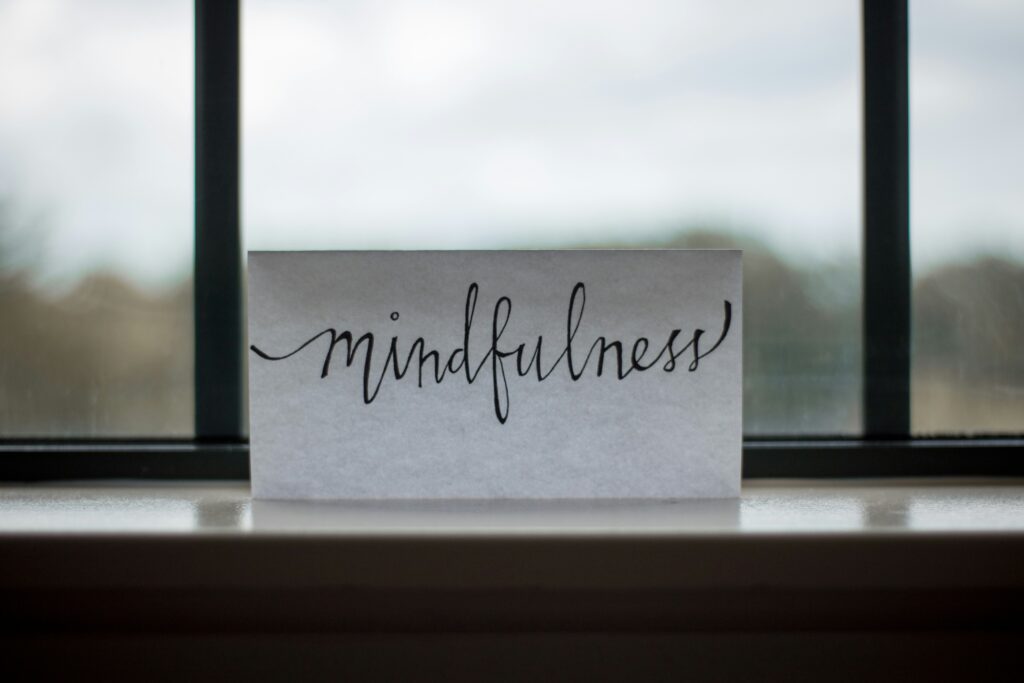
6 Lifestyle Changes That Complement Professional Treatment for Depression
Did you know there are certain lifestyle choices you can make to address depression? And they all apply, whether you’re at home or away.
Here’s the frustrating truth: you’ve started therapy, maybe even medication, and yet you’re still waiting for that breakthrough moment. Sound familiar? You’re hardly alone in this experience. Countless people hit this same wall, wondering what’s missing from the equation.
The missing piece? It’s not some secret pill or revolutionary technique. Professional care delivers its full potential only when you back it up with deliberate shifts in how you live each day, choices that give your brain the environment it needs to actually heal.
Let’s clear something up right away. Lifestyle changes for depression won’t replace your doctor or therapist. They amplify what your clinical team is already doing. The science backs this up: combining clinical intervention with targeted daily practices gives you the strongest foundation for genuine, lasting recovery. Let’s dig into six evidence-backed adjustments that can transform how well your depression treatment works.

Understanding the Partnership Between Treatment and Daily Choices
Check this out: a meta-analysis of 89 randomized clinical trials indicated that lifestyle interventions lead to a reduction in depression, with Hedges’ g equal to −0.21 (95% confidence interval −0.26, −0.15; p < 0.001). That’s not just academic noise, it’s proof that your everyday actions carry real weight.
What you do between appointments shapes the same neural pathways your clinical team is targeting. When you receive Major Depressive Disorder treatment from qualified professionals, they’re tackling neurochemical imbalances and destructive thought loops using validated methods. Your lifestyle? It either builds on that foundation or quietly tears it down.
Picture it like this: clinical care sets the stage for recovery, but your daily patterns determine whether anything can actually grow there. These aren’t rival approaches battling for supremacy; they’re teammates pushing toward your shared goal.

Establishing Better Sleep Patterns That Support Mood Regulation
Sleep does way more than help you feel less exhausted. While you’re unconscious, your brain runs essential maintenance protocols that directly control emotional stability.
Why Your Sleep Schedule Matters More Than You Think
Depression and terrible sleep feed off each other in this brutal cycle. Depression makes falling asleep nearly impossible. Poor sleep makes depression dig its claws in deeper. Breaking free demands more than just “trying harder to sleep.”
Your circadian rhythm, that internal biological clock, governs hormone release, core temperature fluctuations, and dozens of other processes. Throw this rhythm off balance, and you’re messing with serotonin production plus other mood-critical chemicals.
Creating a Consistent Wake-Up Time
Here’s where it gets counterintuitive: when you wake matters far more than when you collapse into bed. Getting up at the same hour every single day (weekends included, sorry) anchors everything else into place.
Get yourself some natural light within thirty minutes of opening your eyes. This tells your brain it’s game time. Even when clouds blanket the sky, outdoor light outshines indoor lighting by massive margins and delivers the signals your circadian system craves.
Building an Evening Wind-Down Routine
Give yourself ninety minutes before bed to downshift. This isn’t about following some influencer’s perfect evening routine; it’s about carving out space between your chaotic day and actual rest.
Lower the lighting, ditch screens if you can manage it, and do something that genuinely relaxes you. Reading works. Gentle stretching works. Calm music works. Your brain desperately needs this gradual transition to prep for restorative sleep.
Once your sleep patterns stabilize, you’ve built the foundation for recovery’s next pillar, but don’t worry, I’m not about to tell you to drag yourself to the gym when getting out of bed feels impossible.

Adjusting Your Eating Patterns to Support Brain Health
Your gut and brain conduct constant two-way communication through what researchers call the gut-brain axis. What you eat directly shapes this ongoing conversation.
Understanding the Gut-Brain Connection
Your digestive system produces roughly 90% of your body’s serotonin. When gut health tanks, your mood typically follows. Inflammation brewing in your digestive tract can spark inflammation in your brain, amplifying depressive symptoms.
Food isn’t medicine standing alone. But strategic eating patterns absolutely support your brain’s healing capacity.
Eating for Reduced Inflammation
Prioritize whole foods whenever feasible: vegetables, fruits, whole grains, fish, nuts. These foods pack nutrients that dial down inflammation throughout your entire body, brain included.
Don’t chase perfection, it’ll drive you crazy. Adding one vegetable serving or swapping processed snacks for nuts a couple of times weekly creates measurable differences. Small, sustainable shifts beat dramatic overhauls that collapse after three days.
What to Minimize (Without Strict Rules)
Ultra-processed foods, excessive sugar, and alcohol tend to worsen depression for most people. Notice I said “minimize,” not “eliminate forever.” Rigid food restrictions often backfire spectacularly, generating stress that sabotages everything else you’re trying to do.
Pay attention to how different foods affect your mood and energy levels. Your body broadcasts valuable feedback constantly if you’re willing to tune in.
Nourishing your body matters enormously, but humans need more than physical nutrition; we need genuine connection, and isolation systematically undermines even your healthiest habits.

Building Connections That Actually Help
Socializing feels utterly impossible when depression has you in its grip. Yet isolation makes everything worse, exponentially worse. The goal isn’t transforming into some social butterfly; it’s finding manageable ways to maintain human connection.
Quality Beats Quantity Every Time
You don’t need fifty friends or a packed social calendar. One authentic conversation delivers more support than dozens of shallow interactions. Focus energy on relationships that feel nourishing instead of draining.
If leaving your house feels overwhelming, start smaller. Text a friend something real. Join an online support group. Watch a show “together” with someone via video chat.

Finding Community Through Shared Activities
Depression support groups connect you with people who genuinely understand without requiring lengthy explanations. Whether online or in-person, these groups offer both validation and practical strategies that actually work.
Communities built around shared hobbies work beautifully, too. Book clubs, art classes, or volunteer work provide both structure and purpose alongside human connection. How to manage depression naturally includes honoring our fundamental human need for belonging.
Setting Boundaries With Energy Drainers
Not every relationship supports your recovery journey. Some people consistently leave you feeling worse after interactions. It’s completely okay to limit contact with energy-draining relationships while you’re healing.
This isn’t about dramatically burning bridges; it’s about protecting your limited energy reserves for relationships that genuinely help.
External support systems matter, but you also need internal tools for navigating the daily stressors that can trigger or intensify depressive episodes.
Developing Tools for Stress Regulation
Habits to improve depression must include go-to strategies for when stress threatens to swallow you whole. These tools help regulate your nervous system before stress spirals into full depressive episodes.

Starting a Simple Mindfulness Practice
Mindfulness doesn’t require sitting cross-legged for hours, chanting mantras. Start with three minutes of focused breathing. Notice your breath without trying to control or change it. When your mind wanders (and it absolutely will), gently guide attention back to breathing.
Apps like Headspace or Calm offer guided sessions if you prefer that structure. The secret is consistency over duration; three minutes every single day beats one marathon, a thirty-minute session weekly.
Using Breathwork for Quick Relief
Box breathing delivers immediate nervous system regulation: inhale for four counts, hold for four, exhale for four, hold for four. Cycle through this pattern several times when anxiety or stress hits hard.
This simple technique activates your parasympathetic nervous system, signaling your body to stand down from high alert. It works particularly well during those anxiety-depression spirals.

Expressing Yourself Creatively
Journaling, drawing, or playing music helps process emotions that feel too overwhelming for regular words. You don’t need artistic talent whatsoever; this is about expression, not creating gallery-worthy performance pieces.
Try writing three unedited pages each morning without censoring yourself. Let whatever needs to come out flow onto the page. This “brain dump” often clears the mental clutter that actively fuels depression.
While you’re building these internal regulation tools, your external environment is either supporting or quietly sabotaging your recovery, often in ways you haven’t consciously noticed yet.
Creating Your Personal Implementation Plan
Don’t attempt changing everything simultaneously; that’s a setup for failure. Start with sleep because it affects literally everything else. Spend two to three weeks establishing consistent sleep patterns before adding another modification.
Once sleep improves noticeably, layer in one additional change. Maybe a daily ten-minute walk or adding vegetables to one meal. Build gradually and sustainably.
Track your mood alongside these new habits. Use an app or a simple notebook to document patterns. This data helps you identify what’s actually working and motivates continued effort.
Remember this: these changes enhance your treatment, they don’t replace it. Keep working closely with your healthcare team, and discuss these lifestyle modifications during your sessions.
Your Questions About Lifestyle Changes and Depression Answered
- How long before I notice improvements from lifestyle changes?
Most people notice initial shifts within two to four weeks of consistent implementation. However, meaningful improvement typically requires six to eight weeks. Be patient with the process and focus on building sustainable habits rather than expecting instant results from lifestyle modifications.
- Can I stop my medication if lifestyle changes help?
Never stop medication without consulting your prescriber. Some people eventually reduce medication under careful medical supervision, but this decision should only happen with professional guidance. Lifestyle changes work best alongside professional treatment, not as replacements for it in most cases.
- What if I’m too depressed to make any changes?
Start impossibly small. Can you open the curtains when you wake? Can you walk to your mailbox? Can you eat one piece of fruit? When depression is severe, even microscopic actions count. Work with your treatment team to find your realistic starting point.
Moving Forward With Confidence
Recovery from depression isn’t about perfection; it’s about making progress, however incremental. The six lifestyle changes we’ve explored work synergistically with professional treatment to create optimal conditions for healing. Sleep stabilizes your foundation. Movement shifts your energy.
Nutrition supports your brain chemistry. Connection reminds you that you’re not facing this alone. Stress management provides daily tools. Your environment reinforces healthy patterns. Start with one change today. Maybe setting a consistent wake-up time or taking a five-minute walk. Small steps compound into a significant transformation when you maintain them consistently over time.




